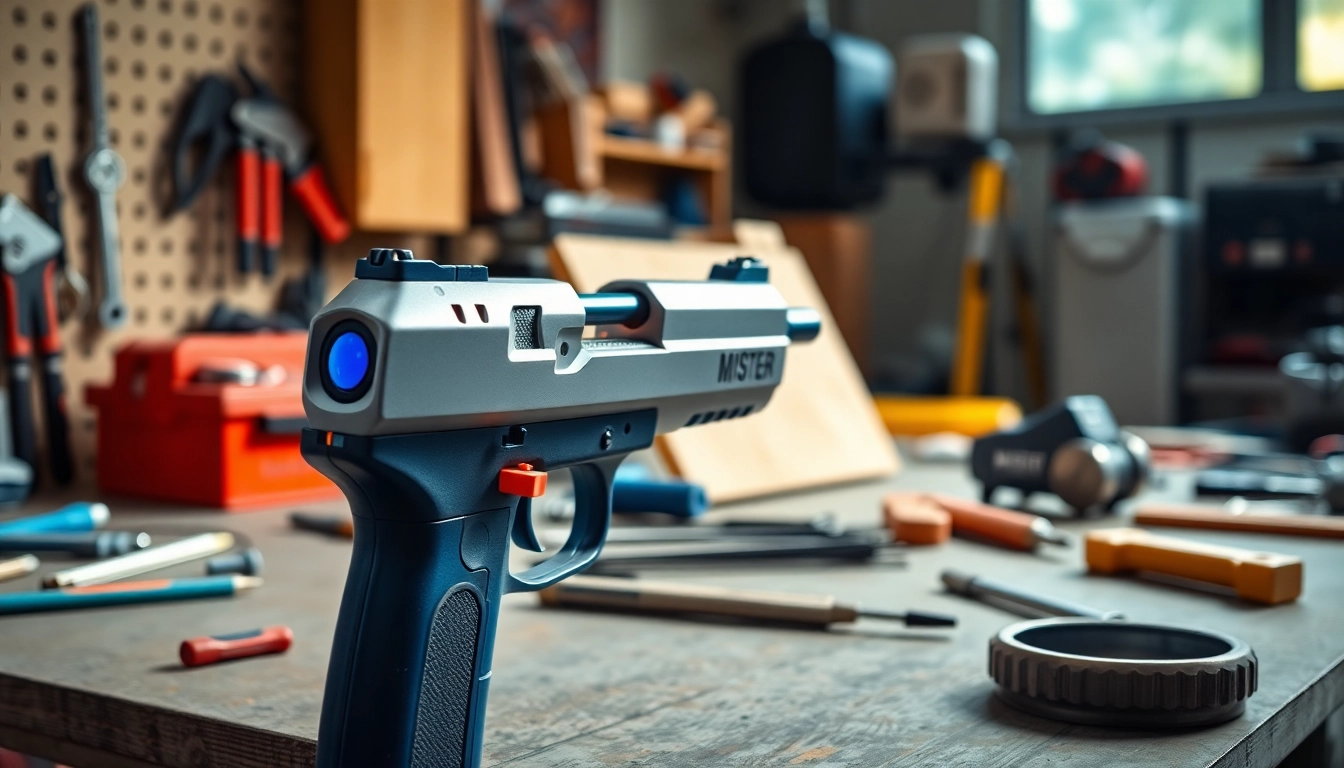Understanding Metal Drawer Systems
In today’s world of modern cabinetry and furniture design, metal drawer systems have emerged as a preferred choice for both functionality and aesthetic appeal. These systems not only add style but also provide unparalleled durability and ease of use, making them an essential consideration for anyone embarking on a new project or renovation. This comprehensive guide will explore everything you need to know about metal drawer systems, from their components to their installation, maintenance, and market comparisons.
What is a Metal Drawer System?
A metal drawer system typically consists of a structured assembly made from steel or another metal, designed to hold and manage the contents of a drawer effectively. Unlike traditional wood drawers, metal systems utilize various mechanical components for smooth operation, enabling better weight distribution and load handling. These systems are often equipped with features such as ball-bearing slides, soft-close mechanisms, and customizable designs to fit any space or decor.
Types of Metal Drawer Systems Available
Metal drawer systems come in various configurations and designs tailored to meet different needs. Understanding these choices can help you select the most appropriate system for your application:
- Side-Mounted Metal Drawer Slides: These slides are installed on the sides of the drawer, offering robust support and smooth action. They are ideal for heavy-duty applications, such as kitchen cabinets and tool drawers.
- Undermount Drawer Slides: As the name suggests, undermount slides are hidden beneath the drawer, providing a clean aesthetic. They are especially popular in modern cabinetry, allowing for full access to the contents without visible hardware.
- Heavy-Duty Drawer Systems: Designed to handle larger loads, these systems are constructed from thicker materials and often incorporate reinforced components. They are commonly used in industrial settings or in areas requiring frequent heavy usage.
- Soft-Close Drawer Mechanisms: This feature allows drawers to close gently and quietly by utilizing specialized hinges or slides, eliminating slamming and ensuring a more peaceful environment.
Benefits of Using Metal Drawer Systems
Investing in metal drawer systems provides numerous advantages, making them an attractive option for various applications. Key benefits include:
- Durability: Metal provides superior resistance to wear and impact compared to wood, making metal drawers last longer in high-use environments.
- Load Capacity: Metal drawer systems can generally hold more weight and are recommended for storage of heavier items.
- Cleaning and Maintenance: Metal surfaces are easier to clean and maintain than wood, which can absorb spills and stains.
- Design Flexibility: Metal drawer systems come in various finishes and styles, allowing for personalization and integration into different design aesthetics.
Key Features to Look For
Materials and Durability of Metal Drawer Systems
When selecting a metal drawer system, the material used plays a crucial role in its overall performance. Common materials include:
- Galvanized Steel: Often used for its corrosion resistance, galvanized steel is a popular choice for kitchen and bathroom applications.
- Aluminum: Lightweight and resistant to corrosion, aluminum drawer systems are ideal for modular designs and environments where ease of handling is essential.
- Stainless Steel: Renowned for its elegance and durability, stainless steel provides a refined look while remaining resistant to rust and stains, making it suitable for professional kitchens and high-end furniture.
Load Capacity and Performance
Different drawer systems have varying load capacities. When choosing a metal drawer system, consider the following:
- Weight Ratings: Ensure the system can accommodate the intended load. Higher weight ratings are essential for drawers that will hold heavy items like tools or large kitchen utensils.
- Slide Mechanism: Look for high-quality slide mechanisms that ensure smooth operation, especially for frequently used drawers. Ball-bearing systems typically provide superior performance.
- Stability: Assess the overall stability of the drawer when fully loaded, as this will affect usability and safety.
Design Considerations for Your Project
When integrating metal drawer systems into your design, consider the following aspects:
- Drawer Size: Ensure the drawer size aligns with your needs. Custom sizes may be necessary for specialized applications.
- Finish and Color: Metal drawer systems come in a variety of finishes, influencing their compatibility with existing decor. Ensure the color complements your overall design.
- Accessibility: Consider how easy it is to access the contents of the drawer. Features like full-extension slides can enhance access dramatically.
Installation Guidelines for Metal Drawer Systems
Preparing Your Cabinets for Installation
Proper preparation of your cabinets can significantly ease the installation process. Follow these steps:
- Measure Accurately: Begin by accurately measuring the cabinet opening where the metal drawer will be installed. This will ensure that the drawer systems fit perfectly.
- Remove Existing Drawers: If replacing an existing drawer system, carefully remove it and clear any obstructions from the installation area.
- Inspect the Cabinet: Ensure the cabinet structure is sturdy and free from damage. Any deficiencies must be repaired before proceeding.
Step-by-Step Installation Process
Installation of metal drawer systems can be accomplished with the following general steps:
- Install Drawer Slides: Attach the drawer slides to the cabinet sides, ensuring they are leveled and secure. Follow the manufacturer’s guidelines for specific width and spacing requirements.
- Prepare Drawer Boxes: Assemble the drawer boxes, if necessary, according to the instructions. Ensure corners are aligned, and glue or fasteners are secure.
- Attach Slides to the Drawer: Fix the other part of the slides onto the sides or bottom of the drawer box, again following specific guidelines based on the system you are using.
- Insert Drawers: Carefully insert the drawer into the cabinet slide components. Ensure smooth and even movement before securing any locking mechanisms.
- Test Functionality: After installation, open and close the drawer several times to check for smooth operation. Adjust hardware if the drawer does not slide easily.
Troubleshooting Common Installation Challenges
During installation, you may encounter various challenges. Here’s how to resolve them:
- Drawer Misalignment: If the drawer does not align properly within the cabinet, adjust the slide position or the mounting screws to center the drawer correctly.
- Sticking Drawers: If the drawer doesn’t slide smoothly, ensure that the slides are clean and free of obstructions. Lubricate the slides if necessary.
- Weight Distribution Issues: For heavily loaded drawers, verify that slides are rated for the weight being stored and redistribute items if necessary.
Comparative Analysis of Leading Brands
Key Competitors in the Metal Drawer System Market
Several brands are recognized for their high-quality metal drawer systems. Notable competitors include:
- Blum: Known for its innovative designs, Blum offers a wide range of drawer systems, including soft-close and high-load capacity options.
- Häfele: This brand specializes in functional hardware components, providing extensive choices in metal drawer systems with a focus on modern aesthetics.
- Richelieu: An industry leader in woodworking supplies, Richelieu showcases various drawer box systems fitting diverse design needs.
- Grass: The ZBox line features high-quality metal drawer solutions that combine strength with elegant functionality.
Gear Comparisons: What Sets Them Apart?
When choosing a brand, consider the following factors:
- Technology: Many brands feature proprietary technologies, such as Blum’s TIP-ON for push-to-open functionality and Häfele’s patented soft-closing mechanisms.
- Availability: Ensure the brand you select has local suppliers to facilitate easy procurement of spare parts and support.
- Design Compatibility: Some brands offer products compatible across various furniture styles, ensuring versatility in design applications.
Price Points and Value Analysis
While price is a crucial factor in selection, it should be considered alongside quality and durability. Here’s how to approach it:
- Entry-Level Options: These may offer basic functionality but can lack durability for heavy usage. Ideal for low-traffic environments.
- Mid-Range Products: Strike a balance between cost and performance, providing good quality with additional features like softer mechanics or higher weight ratings.
- Premium Brands: They come with a price tag but often justify it through superior materials, innovative features, and extensive warranties.
Maintaining and Enhancing Your Metal Drawer System
Routine Maintenance Tips
To extend the lifespan of your metal drawer systems, integrate proper maintenance into your routine:
- Regular Cleaning: Periodically clean the drawers and slides with a damp cloth and mild detergent to remove dust and debris.
- Inspection: Regularly check hardware and slides for any wear, ensuring they are functioning correctly, and replace components as needed.
- Lubrication: Lubricate the moving parts of the drawer slides to maintain smooth operation. Use oil or a silicone-based lubricant as recommended by the manufacturer.
How to Handle Wear and Tear
Over time, even the best drawer systems may experience wear. Here are ways to manage it:
- Replacing Slides: If slides are worn or damaged, replace them promptly to restore the drawer’s functionality.
- Reinforcing Weak Structures: For drawers that sag or are not retaining their original shape, consider reinforcing the structure with additional supports or replacing the drawer itself.
- Regular Adjustments: Some systems allow for adjustments in the hardware to accommodate shifting or wear. Keep these tuned for optimal performance.
Upgrading Your Metal Drawer System: When and How?
As needs change, upgrading your metal drawer system may become necessary. Here’s how to approach it:
- Assess Needs: Determine if your current system meets your functionality needs or if additional features would benefit your usage.
- Research New Options: Explore newer models and systems to discover advancements or features that may provide substantial benefits over your existing setup.
- Professional Help: When upgrading, consider consulting a professional installer, especially for custom-fit drawer solutions or complex renovations.



